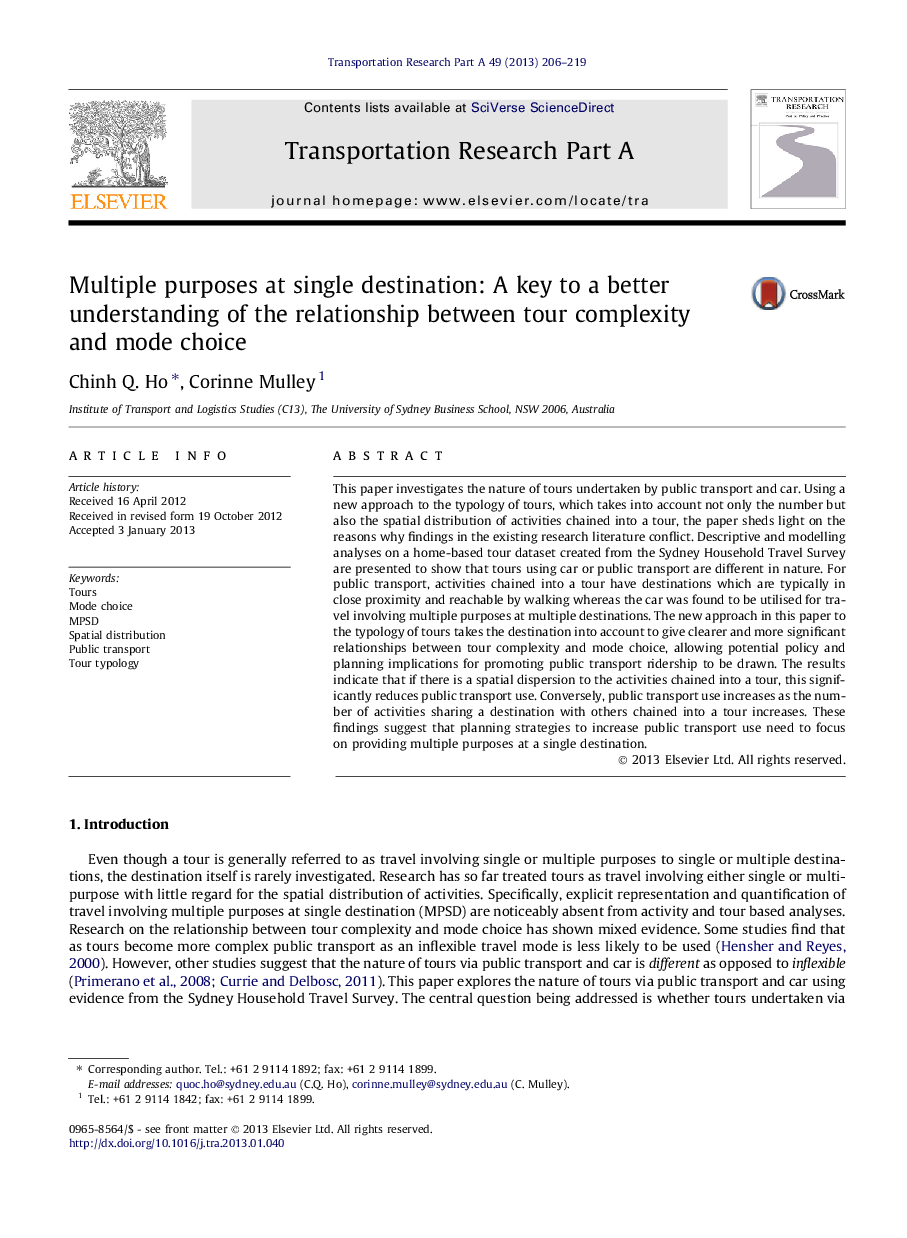| Article ID | Journal | Published Year | Pages | File Type |
|---|---|---|---|---|
| 311279 | Transportation Research Part A: Policy and Practice | 2013 | 14 Pages |
This paper investigates the nature of tours undertaken by public transport and car. Using a new approach to the typology of tours, which takes into account not only the number but also the spatial distribution of activities chained into a tour, the paper sheds light on the reasons why findings in the existing research literature conflict. Descriptive and modelling analyses on a home-based tour dataset created from the Sydney Household Travel Survey are presented to show that tours using car or public transport are different in nature. For public transport, activities chained into a tour have destinations which are typically in close proximity and reachable by walking whereas the car was found to be utilised for travel involving multiple purposes at multiple destinations. The new approach in this paper to the typology of tours takes the destination into account to give clearer and more significant relationships between tour complexity and mode choice, allowing potential policy and planning implications for promoting public transport ridership to be drawn. The results indicate that if there is a spatial dispersion to the activities chained into a tour, this significantly reduces public transport use. Conversely, public transport use increases as the number of activities sharing a destination with others chained into a tour increases. These findings suggest that planning strategies to increase public transport use need to focus on providing multiple purposes at a single destination.
► A typology of tours is proposed which takes account of the spatial distribution of activities. ► Tour complexity for public transport and car is compared. ► Activities chained into public transport tours are in close proximity and reachable by walking. ► Car tours are more likely to be multiple purposes and at multiple destinations. ► The spatial distribution of activities explains conflicting findings in the literature.
